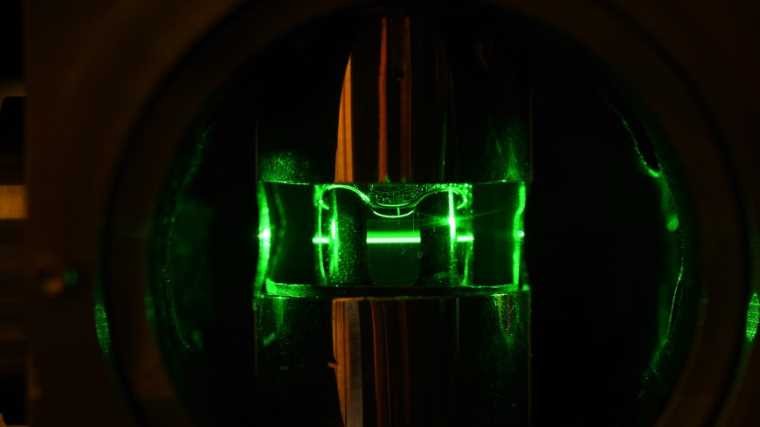German researchers attempting the first-ever direct measurement of material aging, which is defined as the movement of molecules within a material over time, report the unexpected discovery of time reversibility in glass.
Although material aging was discovered over fifty years ago, this is the first time researchers have been able to measure the phenomenon directly. The discovery of time reversibility was completely unexpected, opening up numerous questions about the potential reversibility of the physical laws of nature, as well as the variability of the internal clock within different materials.
The Forward Movement of Time vs. Time Reversibility
In the press release announcing the achievement, the researchers note that we typically think of time as moving in one direction. For example, if one drops a coffee cup, one does not expect to see it suddenly reassemble itself.
Perhaps surprisingly, the researchers say that physicists see time reversibility in a completely different way.
“To physicists, (the forward-only movement of time) is not immediately self-evident because the formulae that describe movements apply irrespective of the direction of time,” they explain. “A video of a pendulum swinging unimpeded, for instance, would look just the same if it ran backwards.”
This means that on a molecular level, the movement of time in a material can be viewed as being reversible if seen from the right perspective.
For example, the researchers point to the movement of molecules within the glass they studied. Like all materials, the particles in the glass are in constant motion, “permanently seeking a more favorable energetic state.” This results in the glass aging.
Still, they point out that in useful materials such as window glass, “this can take billions of years.”
“The aging process can be described by what is known as the “material time,” they explain. “Imagine it like this: the material has an internal clock that ticks differently to the clock on the lab wall. The material time ticks at a different speed depending on how quickly the molecules within the material reorganize.”
Scattering of Laser Light Aids First Ever Measurement of Material Aging
To make the first-ever direct measurement of molecular aging, the Darmstadt researchers directed a laser beam into a sample of glass. When the molecules within the glass scattered the light, they used customized cameras and sensors to measure and record the reflected light patterns.
“This requires extremely precise measurements, which were only possible using state-of-the-art video cameras,” said Prof. Thomas Blochowicz, who led the work.
“It was a huge experimental challenge,” said Till Böhmer from the Institute for Condensed Matter Physics at the Technical University of Darmstadt. “You can’t just watch the molecules jiggle around,” adds Blochowicz.
Next, statistical methods examined those readings, revealing the first-ever direct measurement of material aging. Of course, when the Darmstadt researchers started their experiments, they didn’t expect to find the molecular equivalent of a swinging pendulum, meaning that the aging of the glass was time reversible.
“In terms of material time, the fluctuations of the molecules are time-reversible,” they explain. “This means that they do not change if the material time is allowed to tick backwards, similar to the video of the pendulum, which looks the same when played forwards and backwards.”
Researchers To Study How Findings Relate to The Potential Reversibility of the Physical Laws of Nature
In their published research, which appears in the journal Nature Physics, the researchers make sure to point out that this does not mean that time moves backward in glass or that it can magically fix itself given enough time.
“This does not mean that the aging of materials can be reversed,” emphasizes Böhmer. Instead, they say that their measurement of material aging confirms it is named appropriately since it “expresses the entire irreversible part of the aging of the material.”
Blochowicz says it does, however, leave the researchers with “a mountain of unanswered questions.”
“For example, it remains to be clarified to what extent the observed reversibility in terms of material time is due to the reversibility of the physical laws of nature,” they note, “or how the ticking of the internal clock differs for different materials.”
Moving forward, the research team says they hope to explore these exciting findings further, as “more exciting discoveries could lie ahead.”
Christopher Plain is a Science Fiction and Fantasy novelist and Head Science Writer at The Debrief. Follow and connect with him on X, learn about his books at plainfiction.com, or email him directly at christopher@thedebrief.org.

